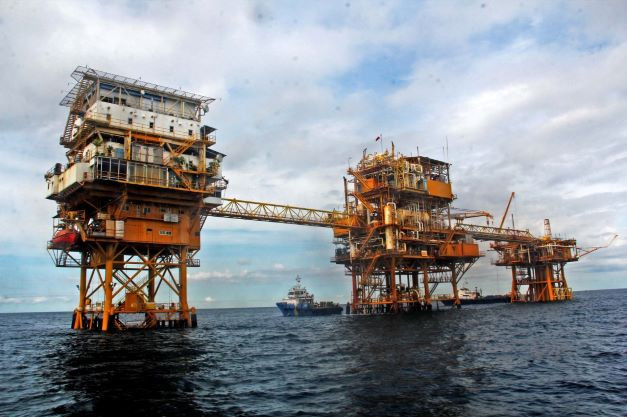Popular Reads
Top Results
Can't find what you're looking for?
View all search resultsPopular Reads
Top Results
Can't find what you're looking for?
View all search resultsFalling oil prices may find IMO’s support
Overwhelmingly bearish economic sentiment has sent oil prices spiraling down and persistent cuts in demand growth forecasts are indicative of further downside risk
Change text size
Gift Premium Articles
to Anyone
O
verwhelmingly bearish economic sentiment has sent oil prices spiraling down and persistent cuts in demand growth forecasts are indicative of further downside risk.
The oil markets, however, could find some support in the near to medium term from a demand spike led by tighter marine fuel specifications by the International Maritime Organization (IMO) that are set to kick in on Jan. 1, 2020.
Front-month ICE Brent futures have fallen by 22 percent from their 2019 high of US$74.50 per barrel seen in late April to $58/b in mid-August.
According to S&P Global Platts Analytics, Brent prices are some $10/b below where fundamentals indicate they should be.
“Fundamentals suggest Brent prices should be much stronger,” Chris Midgley, global director for S&P Global Platts Analytics said in a recent note, adding that healthy refining margins and strong runs are pulling crude stocks lower.
Crude stocks in the three major Organization for Economic Cooperation and Development (OECD) markets of United States, OECD Europe and Japan have fallen by 700,000 barrels per day (b/d) in June and July, he said.
“Watch for much higher global crude runs in the final months of the year as refineries pump out supplies to meet [marine fuel specification] changes for Jan. 1. This means more substantial crude stock draws in November [900,000 b/d] and December [1.3 million b/d].”
The IMO specifications require all marine fuel to contain a maximum sulfur content of 0.5 percent, down from 3.5 percent, and are expected to shift global diesel or gas oil demand higher by around 1.5 million b/d in the fourth quarter of 2019 and first half of 2020, Platts Analytics estimates.
According to Platts Analytics, if Brent prices continue to stay in the $55-$60/b range, driven in large part by sentiment, it will end the year closer to $70-$75/b.
But a worsening global economic sentiment poses a key downside risk.
Although central banks have begun to aggressively cut interest rates and that should eventually support growth or lessen the drop, that will take time and possibly not be evident till later in 2020, and might be overwhelmed by market forces, Platts Analytics said in recent report.
Until then, the fading impact of the US tax stimulus, the increasing headwinds on trade, and ongoing flashpoints for conflict with India-Pakistan, China-Hong Kong and Iranian risk are now very much part of the equation, it said.
Platts Analytics has been lowering its demand growth forecast and in late-July cut it to 1.05-1.10 million b/d from 1.5 million b/d in 2018. In China, which accounts for a bulk of global oil demand growth, Platts Analytics expects apparent oil demand growth to run out of steam from August onward, slowing down from 906,000 b/d year-on-year growth seen in June, given a bleaker outlook for the economic growth overshadowed by increasing trade tension between China and US.
“We are now seeing the [oil demand] growth will likely slow down to 321,000 b/d year on year in the second half of 2019, bringing the annual growth to 519,000 b/d this year, while growth for 2020 will further ease to 483,000 b/d,” it said in a report.
India’s oil products demand grew 1 percent year on year in the first half of 2019 and demand is expected to stage only a modest recovery in the second-half.
The International Energy Agency, in its August report, also lowered oil demand growth
for 2019 by 100,000 b/d to 1.1 million b/d.
“The outlook is fragile with a greater likelihood of a downward revision than an upward one,” the IEA noted.
Supply, on the other hand, looks strong despite OPEC’s large production cuts and continued losses from Venezuela and Iran.
OPEC and its allies have agreed to cut production by 1.2 million b/d through to the end of the first quarter of 2020.
OPEC pumped its fewest barrels in more than five years in July to 29.88 million b/d, aided by a huge production decline in its largest producer, Saudi Arabia, along with falls in Iran, Nigeria, Libya and Venezuela, according to a Platts survey.
But the IEA indicated non-OPEC supply was up 1.4 million b/d year on year in July and is set to grow by 1.9 million b/d in 2019 and 2.2 million b/d next year.
It’s a bleak reading for OPEC, with the IEA highlighting a potential oil market glut in early-2020 when the call on OPEC crude oil plunges to 28.4 million b/d.
OPEC has been unsettled by the recent drop in oil prices and are eyeing a response to falling prices at the next meeting of the group’s top-level monitoring committee in September. The group’s options are limited and it appears it would need to find a way to remove another 1.5 million b/d on top next year.
____________________
The writer is head of news, Asia, S&P Global Platts.










